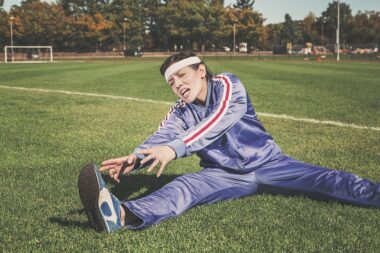How to Effectively Cool Down After Kickboxing
After an intense kickboxing session, the cool-down phase is essential for recovery. It helps reduce heart rate, prevent stiffness, and improve flexibility. Begin your cool-down with gentle movements that gradually lower your heart rate, such as walking around the room. Progressing from active to passive recovery helps switch the body from an intense workout mode to relaxation mode. Focus on controlled breathing to help align your thoughts and calm your mind. Performing a few low-impact stretches for the legs and arms, like toe touches or arm circles, can enhance blood flow and reduce muscle soreness. Consider including foam rolling in your routine; it can help alleviate tension in the muscles. You may also want to hydrate properly afterward, as it’s key in replenishing lost fluids during the workout. Additionally, the cool-down time allows for mental reflection on your workout. Think about what you accomplished and areas you’d like to improve in future sessions. Implementing effective kickboxing cool-down strategies lays a foundation for better performance and injury prevention. Take the time you need to ensure your recovery is optimal and effective.
Incorporating stretching routines is a core component of your cool-down after kickboxing. Stretching works wonders to improve flexibility and mobility in your muscles and joints. Effective stretching methods often include static holds where each pose is maintained for about 20 to 30 seconds. Ideal stretches after a kickboxing session could be seated straddle stretches and quad stretches. Remember to breathe steadily while stretching, acknowledging that relaxation is essential during this time. You can also engage in deep breathing exercises, which helps to recalibrate your body’s energy levels post-exercise. Slow, deep breaths foster relaxation, focusing on inhaling through the nose and exhaling through the mouth. It’s also valuable to stretch major muscle groups used in kickboxing, including the hamstrings, calves, shoulders, and back. Additionally, don’t neglect the areas that experienced significant impact during your kickboxing routine. Stretching these muscle groups minimizes the risks of injuries while promoting overall muscle recovery. If you can, consider using a mirror during your stretches to monitor your form. Doing so can ensure you get the most out of each movement while cool-down exercises provide the benefits needed for enhanced recovery.
The Role of Hydration in Recovery
Hydration plays a critical role in your kickboxing cool-down regimen. When you kickbox, you lose lots of water and electrolytes. Replenishing these lost fluids after your session is key to avoiding dehydration. Drinking water or electrolyte-based drinks helps restore balance in your body. Aim for at least 16 to 20 ounces of water within the first hour post-workout. This ensures that your body can recover from the exertions of the exercise. Additionally, maintaining hydration aids in the muscle recovery process by flushing out toxins and minimizing soreness. Consider keeping a water bottle handy during your workout for easy access, making your hydration efforts more efficient. Moreover, notice any signs of dehydration, such as fatigue or dizziness, which signal the need for water. Adjust your hydration plan based on personal sweat levels and workout intensity. Ideally, pre-plan your hydration strategy before starting your kickboxing regimen. Consistency in fluid intake yields a better recovery experience and keeps your energy levels maintained for the next training session. Remember that adequate hydration equates to improved performance, endurance, and overall fitness.
Post-cool-down nutrition also plays a vital role in kickboxing recovery. After exerting significant energy in your training, refueling your body with nutrients becomes essential. Your post-workout meal or snack should ideally include a balance of carbohydrates and protein. Carbohydrates help to replenish glycogen stores, while protein assists with muscle repair and recovery. Some great choices are a smoothie with fruits and yogurt, peanut butter on whole-grain toast, or a lean protein shake. Timing matters; try consuming your recovery meal within 30 to 60 minutes after your training session. This window is optimal for muscle recovery. Don’t forget healthy fats as well, which can provide more energy and help reduce inflammation throughout the body. Avoid overly sugary or highly processed foods that can lead to energy crashes later on. Listening to your body regarding hunger cues can assist in understanding the right quantity of food needed post-exercise. An effective combination of nutrients enhances recovery, ensuring you’re ready and energized for your next kickboxing class. Ultimately, the balance of nutrition and exercise will set you on a path toward success in your kickboxing journey.
Mindfulness Techniques for Cooling Down
Practicing mindfulness during the cool-down phase of kickboxing can profoundly impact recovery. Mindfulness techniques encourage athletes to connect with their bodies and the present moment, reducing tension and stress. You might find engaging in deep breathing exercises beneficial; these can help slow your heart rate and promote relaxation. Visualizing your workout, including your movements and feelings, can also foster a sense of accomplishment. This reflective practice encourages you to acknowledge efforts while building motivation for future sessions. Moreover, consider integrating progressive muscle relaxation, where you systematically tense and relax muscle groups in your body. This method encourages deeper awareness of body sensations and aids in physical recovery. Set aside a few quiet minutes after your session to embrace these mindfulness techniques fully. Additionally, find a comfortable, peaceful spot to sit or lay down as you focus on your breathing patterns. Incorporating mindfulness techniques aligns your mental and emotional state after a high-energy workout like kickboxing. It can enhance focus and ensure you are emotionally renewed as you transition to the rest of your day. Overall, being mindful can lead to improved performance in future workouts.
Incorporating foam rolling into your kickboxing cool-down routine can yield numerous benefits. Foam rolling is a form of self-myofascial release, which helps alleviate muscle tightness and soreness. As part of your cool-down routine, take time to focus on tight areas used during your training, such as the calves, quads, and shoulders. Spend about one to two minutes on each muscle group you roll. This timing helps to release tension while promoting better circulation throughout your body. Aim for gentle movements that gradually increase pressure according to your comfort level. Be aware of your body’s response and avoid excessive discomfort. Additionally, using a foam roller enhances flexibility, complementing the stretches performed during the cool-down and improving range of motion. Implementing foam rolling sessions will not only contribute to better performance but also to injury prevention in the long run. Make it a consistent part of your routine following your kickboxing workouts. You’ll likely notice a significant difference in recovery and performance as you incorporate this technique into your overall fitness regimen. Remember, the key to effective cool-downs is remaining dedicated to practicing beneficial habits consistently.
Conclusion: The Importance of a Cool Down
Cooling down after kickboxing is a fundamental aspect of any workout routine. Prioritizing this phase allows your body to recover properly, promoting long-term fitness results. The benefits of cooling down significantly outweigh the effort it requires. Incorporating thoughtful practices like stretching, hydration, nutrition, mindfulness, and foam rolling contributes to enhanced performance in kickboxing. Ensure you take the time after each session to implement these cool-down strategies. Not only does cooling down help prevent injuries, but it also allows for a more reflective experience of your workout achievements. Understanding the importance of recovery leads to improved fitness levels, both physically and mentally. As you develop a consistent routine, you’ll feel the improvements in your performance during kickboxing and other workouts. A solid cool-down routine also provides a mental check-in for your progress, identifying areas to work on in future sessions. Investing effort in cooling down promotes overall well-being, encouraging sustainable engagement in fitness activities. Recognize that a comprehensive approach to training should always include a proper conclusion to each workout. Exceptional fitness habits cultivate better long-term outcomes.





